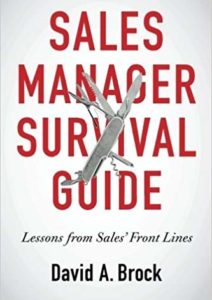Growing up, I always thought of being a scientist/engineer. I learned that math, physics, science are based on certain underlying principles. 2+2 always equals 4, the fundamental laws of physics, thermodynamics, and so forth always apply. The basic principles remain the same. Research has caused us to learn more about the principles, our understanding of the behavior of things at a subatomic level has been enhance. But the underlying principles still apply.
The practices of science and engineering, though, have changed. In high school I did math using a slide rule (yeah, I ‘m dating myself), started programming at a teletype terminal in Basic, and learned drafting on a board with a T-Square, triangles, and drafting instruments. In college, I “graduated” to using calculators (I couldn’t afford the HP which was what everyone carried, but the TI Scientific Calculator was great–and it didn’t use RPN). When I first started college, I programmed in Basic and Fortran and punched my programs on cards. By the time I graduated, I was using APL, used cool analytic packages like SPSS, and worked at a terminal.
In college, I learned the principles of design, understanding the basic principles of physics/science always applied—violate them and your design failed, sometimes catastrophically. You had to comply with all of them, not pick and choose among a few of them. If you didn’t, your design failed, sometimes catastrophically.
Fast forward to today. I still spend a lot of time with scientists and engineers. How they work has changed profoundly. The tools they use have changed, the time required to design products has compressed. They do things that were unimaginable in the past — or only in found in the writings of Jules Vernes, Ray Bradbury, and other science fiction authors. (Or on the Jetson’s on Saturday mornings.)
But the underlying principles are still the same. Violate them and your designs still fail, sometimes catastrophically.
When something goes wrong in science or engineering, or when we have difficulties, we can always go back to basic principles and build up from there. Even though the techniques or tools may fail us, or limit what we can achieve, the basic principles provide a framework that enables us to build and grow.
The same can be said about the principles of sales, as well. There are some fundamental principles about selling. Many of us don’t know them, because unlike learning math or science, much of our learning about sales hasn’t focused on the underlying principles, which is a problem.
- Selling is about an interactions between people. Yeah, we can’t take them out of the equation. So there are messy things like relationships, trust, communicating, engaging, and collaborating with people–customers, teammates, and others.
- Selling is about exchanges in value between people. Each must have something the other wants, otherwise there’s no need for an exchange. The exchange can be about a variety of things: ideas, problems, dreams, information, data, opinions, and, sometimes, money.
- Selling is about change. Both parties must want something different than what they now have or do. If either party sees no need for change, then nothing happens.
- Selling is about continual learning and improvement, by all parties. If any party has no desire to improve or learn, then nothing happens.
I’m not sure there are any other principles in selling–I’d love your ideas. But the one thing I know, is that violating any of these principles, and we fail, sometimes catastrophically.
The tools and techniques used by scientists and engineers are amazingly simple to use. You don’t have to be a scientist or engineer to use them. Anyone can learn how to use a CAD terminal, 3-D (along with 3-D printing) is no longer a mystery. Analysis tools are accessible and usable by many. Anyone can look through a microscope or telescope. But without a grounding in the basic principles of math and science, it’s virtually impossible to design elegant products, that work–and don’t crumble, sometimes catastrophically. See the basic principles always apply, regardless of the skills of the users. It’s just that scientists and engineers are trained in the basic principles and know how to leverage the tools and techniques to design great things–without violating the basic principles.
Like science and engineering, the practice and tools of selling have changed profoundly. What we used to do by going d00r-to-door or “smokestack hunting,” was supplemented by the telephone, then by email, then by networking, mobility, and other technologies. The methods, processes, technologies, and way we sell have changed and will continue profoundly.
Yet the underlying principles remain the same; selling is about interactions between people—the quality of those interactions impacts our mutual success. It’s about the exchange of value—understanding what each values is critical to our mutual success. It’s about change—a compelling need to change and aligned visions of change are critical to our mutual success.
I think many of the challenges we face in buying and selling, is because we don’t know or choose to ignore the underlying principles of selling. Instead, we get caught up in the latest greatest techniques, tool, method, or get rich quick scheme. But if those aren’t grounded in the underlying principles of selling–all of them, we will fail, sometimes catastrophically.
The discussions that swirl around the profession about new methods, tools, and techniques are exciting. They have the ability to help us improve and improve what we can achieve with customers. But the discussions have to be grounded in basic principles. We can’t lose sight of them. If we do, then we fail, sometimes ……..
Related Posts:
- What Today’s Buyer Knows That Will Make You Rethink Your Business
- The Sales Pipeline Revealed
- Three Ways to Ask “The Right Stuff” and Accelerate the Sales Process












